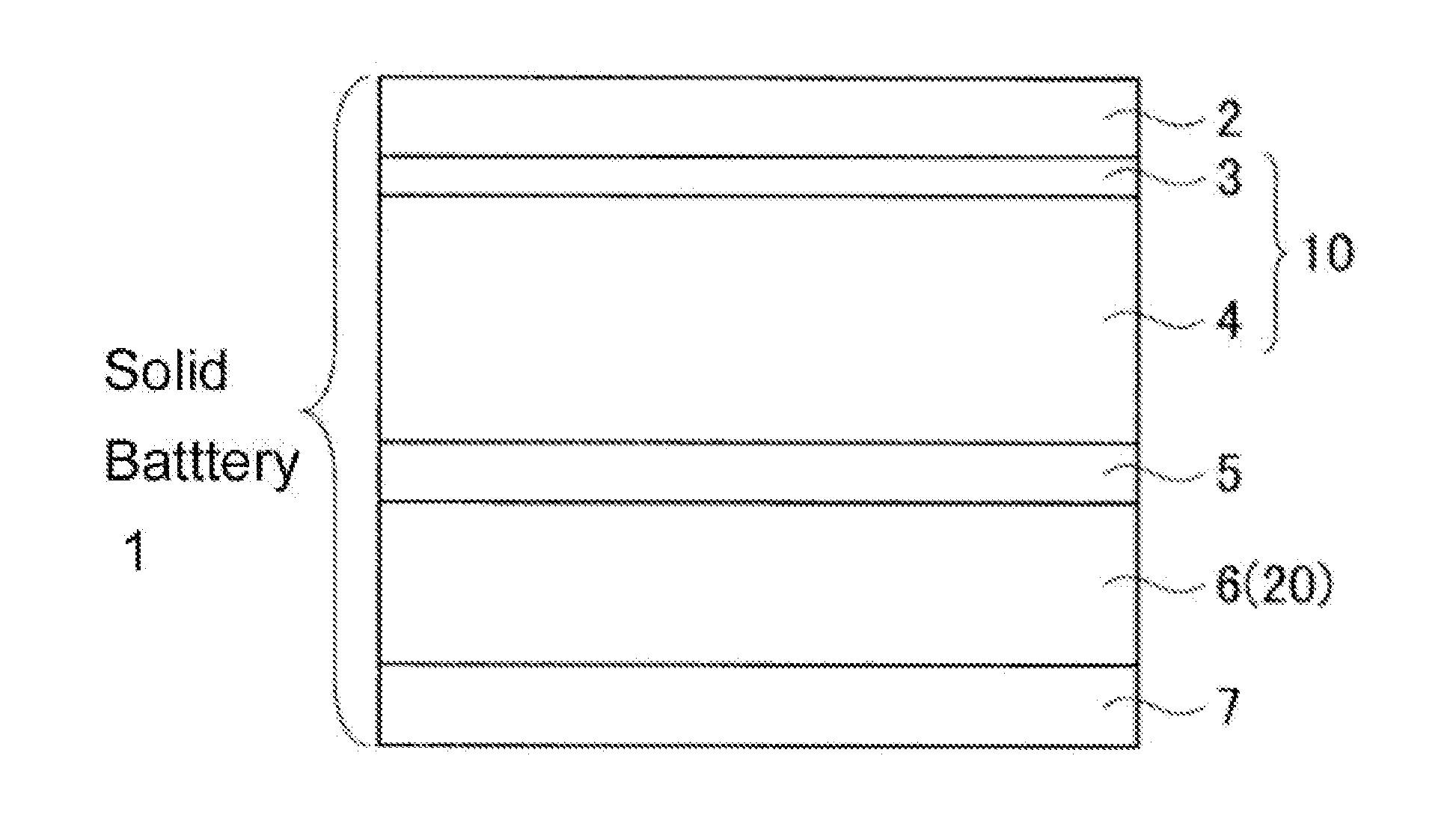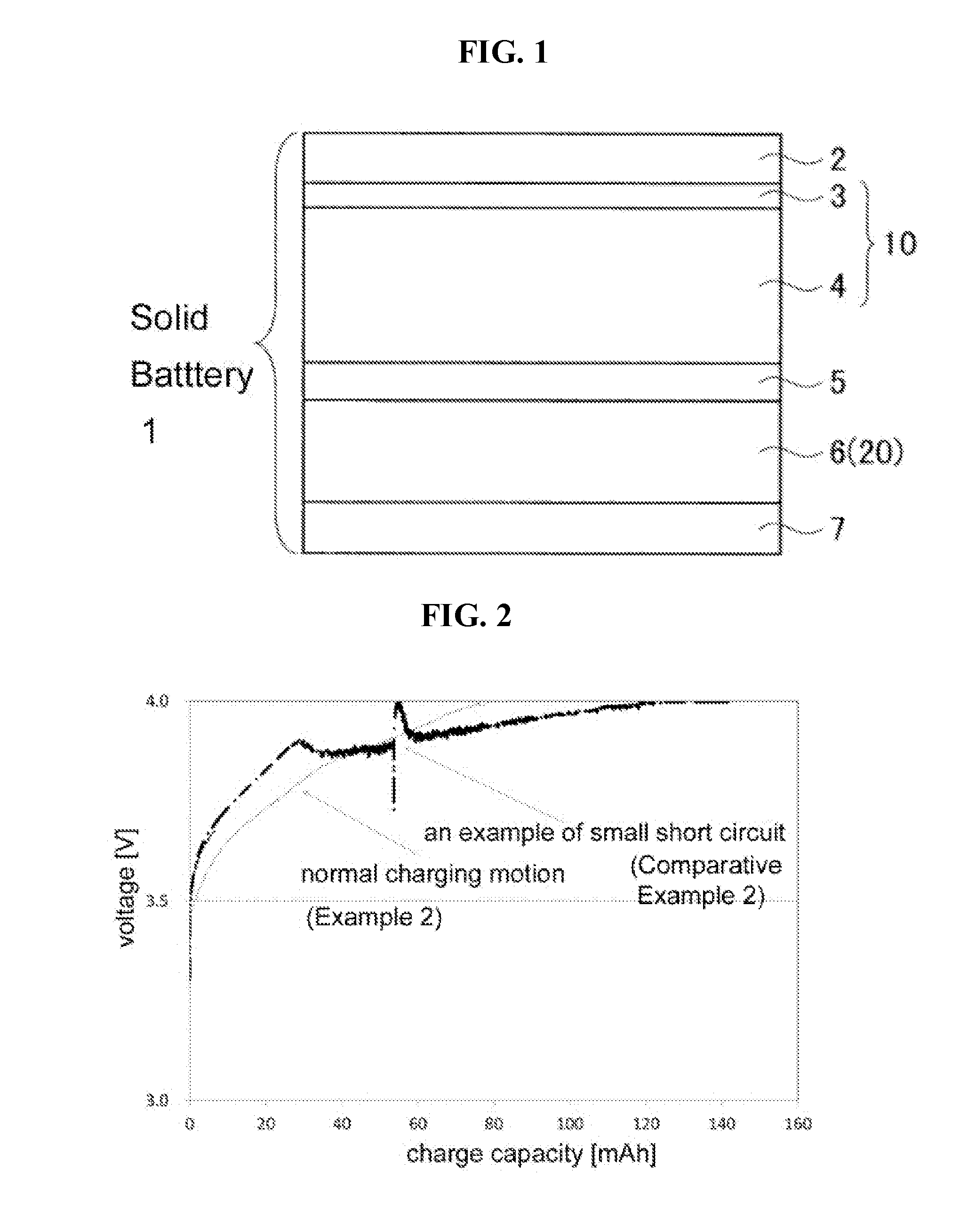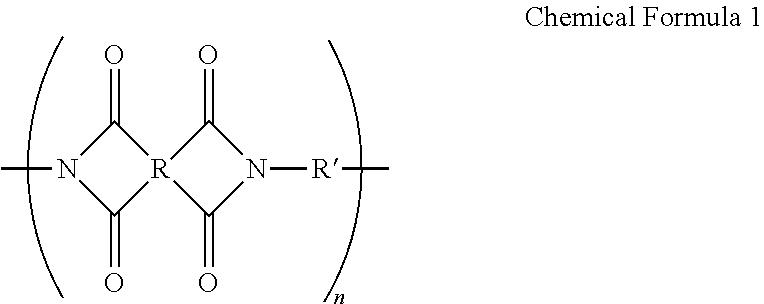Solid-state battery
a solid-state battery and battery body technology, applied in the field of solid-state batteries, can solve the problems of difficult to increase the size of the electrode area and powder compression molding may not be suitable for the preparation of high-capacity solid-state batteries, and achieve the effect of improving the lifetime characteristics
- Summary
- Abstract
- Description
- Claims
- Application Information
AI Technical Summary
Benefits of technology
Problems solved by technology
Method used
Image
Examples
example 1
Adhesive Layer Formation
[0136]Graphite (KS-4, Timcal, hereinafter the same), acetylene black (DENKA, hereinafter the same) as an adhesive layer conductive material, a styrene-based thermoplastic elastomer (hereinafter, referred to as “binder A”) (S.O.E1611, Asai Kasei Corporation, hereinafter the same) as a first binder, and acid modified polyvinylidene fluoride (“PVDF”) (hereinafter, referred to as “binder B”) (KF9200, Kureha Corporation, hereinafter the same) as a third binder were weighed at a weight percent ratio of about 60:10:15:15. Then, the above materials and an appropriate amount of NMP were introduced into a planetary mixer and mixed at about 3,000 revolutions per minute (“RPM”) for about 5 minutes to prepare an adhesive layer coating solution.
[0137]Next, an about 20 micrometer (μm) thick aluminum foil current collector, as the cathode current collector 2, was disposed on a desktop screen printer (Newlong Seimitsu Kogyo Co., Ltd., hereinafter the same), and the aluminum f...
example 2
Cathode Structure Formation
[0148]A cathode structure was formed in the same manner as in Example 1. Anode layer Formation
[0149]Si alloy powder (vacuum dried at about 80° C. for about 24 hours) as an anode active material, binder A as a first binder, and binder C (polyamic acid type polyimide resin, HCI1000S, Hitachi Chemical Co., Ltd., elastic modulus of about 2.5 GPa) as a second binder were weighed at a weight percent ratio of about 94.5:0.5:5.0. The above materials and an appropriate amount of NMP were introduced into a planetary mixer and mixed at about 3,000 rpm for about 3 minutes. Then, an anode layer coating solution was prepared by performing a degassing treatment for about 1 minute.
[0150]Next, an about 16 μm thick copper foil current collector was prepared as the anode current collector 7, and the copper foil current collector was coated with the anode layer coating solution using a blade. A thickness (gap) of the anode layer coating solution on the copper foil current col...
PUM
| Property | Measurement | Unit |
|---|---|---|
| temperature | aaaaa | aaaaa |
| temperature | aaaaa | aaaaa |
| temperature | aaaaa | aaaaa |
Abstract
Description
Claims
Application Information
 Login to View More
Login to View More - R&D
- Intellectual Property
- Life Sciences
- Materials
- Tech Scout
- Unparalleled Data Quality
- Higher Quality Content
- 60% Fewer Hallucinations
Browse by: Latest US Patents, China's latest patents, Technical Efficacy Thesaurus, Application Domain, Technology Topic, Popular Technical Reports.
© 2025 PatSnap. All rights reserved.Legal|Privacy policy|Modern Slavery Act Transparency Statement|Sitemap|About US| Contact US: help@patsnap.com



